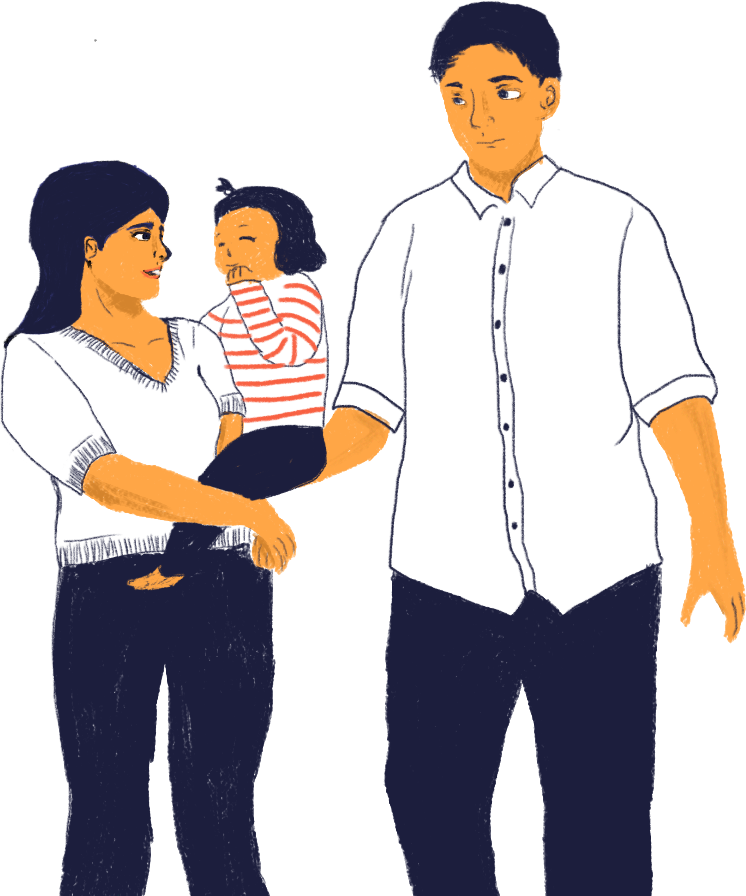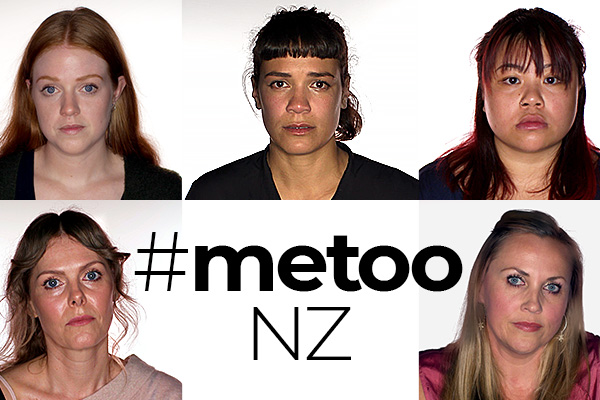Add your title
Combine large, bold images with the beautifully crafted words of your story.

-
The
-
The
PARENT
-
PARENT
TRAP
-
TRAP
When
-
When
disinformation
-
disinformation
costs lives
-
costs -

Vaccination rates are falling almost everywhere. And there is a measles epidemic threatening lives. It’s no coincidence.

Michelle Duff
National Correspondent

Andy Fyers
Senior Data Journalist
Vaccine hesitancy – the reluctance or refusal to vaccinate despite the availability of vaccines – is now considered one of the ten biggest threats to global health.
This doesn’t just mean active anti-vaxxers. It means parents who aren’t sure. It means those who delay vaccination, because it seems like the easier decision.
It means an antenatal class of expectant parents being told to “do their own research” into the safety of vaccines. It means a well-meaning mum sharing a discredited study about the “dangers” of vaccines on social media. It means a nanny warning her daughters not to put “poison” into her mokopuna.
This is the Parent Trap that puts the lives of young and vulnerable New Zealanders at risk.
New Zealand’s vaccination rates have been decreasing steadily since 2016.
Some parts, like the Bay of Plenty and Northland, have much larger falls in immunisation rates than others.
Show RatesThe question we are faced with is: to what extent are these drops due to vaccine hesitancy or active refusal, as opposed to poverty and a lack of access?
Practices nationwide code parents as “declines” if they have turned down one or more vaccinations.
As a rough measure of vaccination hesitancy, we would expect to see more declines.
At the eight-month milestone – when three rounds of vaccinations have been offered – declines have increased from 3.6 per cent to 5.3 per cent of eligible children since 2016.
At the same time, 8-month-olds not fully immunised for unrecorded reasons – for example, that they haven’t been in contact with the system – increased from 2.9 per cent to 3.8 per cent.
This suggests that the main factors driving the decrease are a reluctance to be vaccinated, exacerbated by a lack of access.
Disinformation has now permeated out of those wealthier networks who circulate the anti-vaccine material and social media has gained access to those people, those high-deprivation people.
University of Auckland vaccinologist
Helen Petousis-Harris, former head of research for the Immunisation Advisory Centre.
In places like Northland they are now struggling with this type of material in their really highly deprived population, and there have been massive declines up there. Massive. Social media, that's what's changed.
Whatever the cause, immunisation rates are down, and more people are declining them.
At the 8-month milestone, almost all parts of the country saw more people declining vaccines between 2016 and 2018. In several areas, rates of decline have shot up by four percentage points or more in the past three years.
POVERTY AND DEPRIVATION
Like almost all health issues, low immunisation rates can be linked to higher levels of poverty and deprivation.
But economic deprivation does not tell the entire story.
There have always been communities that have refused to vaccinate. These are often those who live “alternative” lifestyles, seen in parts of the Coromandel, Raglan, Waiheke Island, Hokitika, and Golden Bay. It also includes the West Coast community of Gloriavale.
This makes it a unique health challenge. We don’t tend to see affluent pockets of New Zealand that suffer from high smoking rates, or poorly managed diabetes, for example.
Vaccination rates are dropping across communities, irrespective of income.
This also suggests that vaccine hesitancy is driving the recent drop in immunisation rates.
If it was all about poverty and access, why did rates fall in one quarter of New Zealand’s least deprived neighbourhoods between 2016 and 2018?
Our biggest city provides an interesting case study. Overall, rates in Auckland have not fared as poorly as some parts of the country. But there are plenty of pockets that have seen decreases. These are at both ends of the socio-economic spectrum.
Herne Bay, one of the wealthiest places in the country has seen rates for all milestone ages fall from 93 to 84 per cent in two years.
A few kilometres across the city to the east in Glen Innes – among the bottom quarter of most deprived suburbs in the country in 2013 – rates rose about three percentage points in the same time.
Compare these two maps of Auckland. In the first one, the darker red marks the poorest areas.
In the second map, the darker red marks areas with the biggest drops in immunisation rates.
They’re not the same. If social deprivation was the main driving force behind the changes in rates, we’d expect the darker red to appear in similar places in both maps.
PUBLIC HEALTH CHALLENGE
Although vaccine rates in New Zealand remain relatively high as a whole, national data glosses over the pockets of vaccine refusal that exist in many communities.
Anti-vaccination sentiment tends to group together, so we can have geographic or social groups of very high rates of decline.
Nikki Turner, head of the Immunisation Advisory Centre
They all share the concerns together and create their own little patches and then there is real risk of disease spreading in these groups.
For herd immunity to work, coverage needs to be at least 90 per cent.
In areas with low rates, vaccine-preventable diseases like measles and pertussis can quickly take hold. In the poorest parts of the country, where rates might already be low due to poverty or access issues, increasing numbers of people who choose not to vaccinate puts an already vulnerable population further at risk.
This is what is unfolding in the worsening measles epidemic in South Auckland right now.
Misinformation harms everyone, but it is lower-income people who suffer the most.
The most vulnerable, experts say, are increasingly targeted and swayed by fake science and misinformation.
Vaccination is the safest and most effective way to protect people from contagious and life-threatening disease. Each decision not to vaccinate makes the next person weaker.
Our social networks could save us. Or they could cost us lives.
As the country wrestles with the worst measles outbreak in more than two decades, it has to be asked; what are we going to do about it?
Immunisation rates where you live
Reporter
Michelle Duff
Data Editor
Andy Fyers
Design&
Development
Sungmi Kim
PROJECT EDITOR
John Hartevelt







